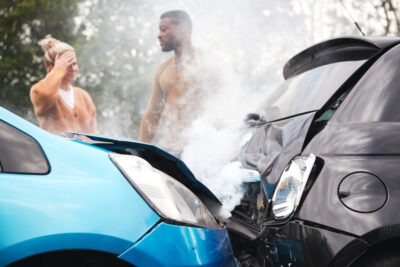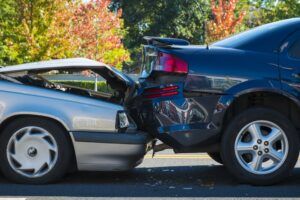
No, South Carolina is not a no-fault state for accidents. It is a fault-based state, which means the driver who causes the crash is legally responsible for covering the damages. This system allows injured drivers to file claims directly against the at-fault party rather than relying solely on their own insurance.
Because fault must be clearly established to recover compensation, it’s important for crash victims in South Carolina to understand how liability, evidence, and insurance coverage all work together. That’s why many injured drivers choose to speak with a Greenwood personal injury lawyer as soon as possible after a collision.
What “Fault-Based” Means in South Carolina
In a fault-based system, the driver who caused the crash is responsible for the resulting damages. This includes:
- Medical bills
- Vehicle repairs or replacement
- Lost wages
- Pain and suffering
- Other financial or emotional losses
If you’re injured in a South Carolina accident, you generally have three options for pursuing compensation:
- File a claim with the at-fault driver’s insurance company.
- File a claim with your own insurance (which may then pursue reimbursement).
- File a personal injury lawsuit in civil court.
Unlike in no-fault states, you are not required to go through your own insurer first, and you are not limited to specific injury thresholds before suing the other driver.
Get the strong arm
Minimum Insurance Requirements in South Carolina
To legally drive in South Carolina, motorists must carry the following minimum liability insurance coverage:
- $25,000 for bodily injury per person
- $50,000 for bodily injury per accident
- $25,000 for property damage
This coverage is designed to pay for the harm the policyholder causes to others in a crash. South Carolina also requires uninsured motorist (UM) coverage in the same minimum amounts to protect drivers if the at-fault party has no insurance.
At John Foy & Associates, we help clients understand which policies apply to their accident and how to get the maximum compensation from each one.
What About Partial Fault?
South Carolina follows a modified comparative negligence rule. This means:
- You can still recover damages as long as you are less than 51% at fault for the accident.
- If you are partially at fault, your recovery will be reduced by your percentage of fault.
For example, if you’re awarded $100,000 in damages but are found to be 20% at fault, you would receive $80,000. We regularly work with accident reconstruction specialists and investigators to challenge unfair blame assignments and ensure our clients aren’t wrongfully penalized under comparative fault rules.
How We Prove Fault in South Carolina Accidents
In a fault-based system like South Carolina’s, proving liability is critical. We take a thorough approach to building strong cases for our clients, which includes:
- Collecting police reports and eyewitness statements
- Obtaining traffic camera or dash cam footage
- Gathering physical evidence from the crash scene
- Consulting accident reconstruction experts
- Requesting cellphone records, black box data, or toxicology reports when relevant
Every piece of evidence helps us show how the crash happened and why our client should not be held responsible for another driver’s negligence.
Common Mistakes That Can Hurt Fault-Based Claims
Because compensation depends on proving fault, it’s easy for accident victims to unknowingly hurt their case. Some of the most common missteps we help clients avoid include:
- Admitting fault at the scene or to an insurance adjuster
- Delaying medical treatment, which makes it harder to prove injury
- Posting about the crash on social media, which can be used against you
- Accepting a quick settlement before knowing the full extent of your injuries
- Failing to document the accident thoroughly
We guide our clients through every step of the process so these details don’t get overlooked or used unfairly against them.
What If the At-Fault Driver Is Uninsured?
South Carolina’s required uninsured motorist coverage protects you if you’re injured by someone with no insurance. In this case, you would file a UM claim through your own policy.
We assist clients with UM claims by:
- Gathering evidence to show the other driver was at fault
- Calculating full damages, including future medical costs
- Negotiating with their insurance provider for fair payment
- Ensuring deadlines are met under the policy terms
Even though it’s your own insurer, that doesn’t always mean the process will be easy or fair. That’s where legal experience matters.
Why Fault-Based Systems Benefit the Injured—With the Right Support
Unlike no-fault states, where you may be limited in what you can recover, South Carolina’s fault-based system allows you to pursue full compensation from the person who caused your injuries. But to do that, you need to prove fault and deal with insurance companies that are trained to minimize payouts.
At John Foy & Associates, we help clients recover the maximum compensation available, whether through insurance claims or lawsuits. That includes damages for pain and suffering, future medical care, lost earning potential, and the long-term impact of serious injuries.
We Help South Carolina Drivers Recover With Confidence
As we expand our services into South Carolina, we bring with us more than 350 years of combined experience, over $1 billion recovered, and a reputation for standing up for injury victims when it matters most.
We know the difference between no-fault and fault-based systems and how to build strong cases that hold negligent drivers accountable. If you’ve been in a South Carolina accident and aren’t sure who should pay or how fault is being assigned, you can count on John Foy & Associates.
We’re here to help you understand your rights and pursue the recovery you deserve. Reach out to The Strong Arm™ today for more information and to get started on your case.
(404) 400-4000 or complete a Free Case Evaluation form





